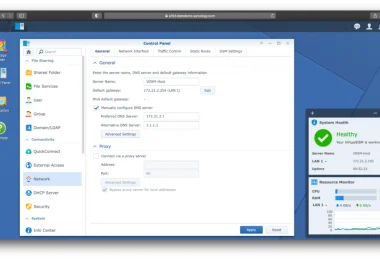A typical installation of Windows Server 2008’s network operating system (NOS) and setup of your server is described below. Although the details may differ, the general approach for different operating systems is the same.
Network Operating System Installation
As a general rule, it’s better to do a fresh installation of Windows Server 2008 directly from the DVD installation media. Upgrade installations are feasible, however a fresh installation will be more stable for your server. This is why most network managers wait until it’s time to replace the server hardware before updating.
Insert the DVD distribution media into the server’s DVD drive and restart the server to begin the installation. If you choose this option, the server will boot immediately from the distribution disk, and the setup software will be launched.
Installing Windows and Collecting Information are the two different steps of the setup software. Details of these steps of installation are provided in the following chapters.
To begin, gather information about network server
As part of the initial setup process, the setup application will ask you for some basic information. The following information is requested by a setup wizard:
- Time zone and keyboard type can be changed by selecting a language.
- Please enter the 25-character product key that was included with your installation disk. Verify your product key again if setup indicates you supplied an incorrect product key; otherwise, go to step 3. Most likely, you typed the wrong key.
- Type of operating system: UNIX, choose between Standard Edition and Core in the setup software. For the entire server operating system, select Standard Edition. For the new text-only version, select Core (the default).
- The licensing agreement is shown. Before you can move forward, you must accept its terms.
- Install Type: Select between an upgrade or a Clean Installation.
- Locate the partition on which Windows will be installed.
- When it comes time to update your FAT32 system to NTFS, you’ll have to let us know.
Secondly, you will need to set up Windows.
- Windows setup begins the actual installation procedure in this step. The following stages must be followed in order:
- In this step, the installation files are compressed and transferred to the server’s hard drive in a compressed format.
- Expanding Files: The compressed installation files are uncompressed and uncompressed again.
- Features are installed on the Windows server.
- Updating the Operating System: The setup application scans Microsoft’s website and downloads any important OS updates it finds.
- The setup program reboots when the updates have been installed, allowing it to complete the installation.
How to Setup Your Web Server (network server)
You’ll see the Initial Configuration Tasks Wizard once Windows Server 2008 has been installed. To configure your new server, you will be guided by this wizard through the most critical tasks.
- When you install Windows, you should set a safe administrator password as the first thing you do.
- It’s only essential if the time zone is incorrectly shown.
- If you desire, you may alter the default network settings using the Configure Networking option.
- Changing the server’s computer name and joining a domain is possible with this option.
- Allow automatic updating: Use this option if you want the server to check for operating system updates on its own, rather than having to manually do it.
- Obtain and install any necessary updates. Use this option to see whether there are any important updates for your operating system.
- You may configure critical roles for your server using the Add Roles Wizard by selecting this option.
- Add Operating System Features: This option allows you to add more operating system features.
- If you select “Enable Remote Desktop,” you’ll have the option of managing this server from a remote computer.
- You may use this menu item to setup the built-in firewall in Windows if you wish to utilize it.






